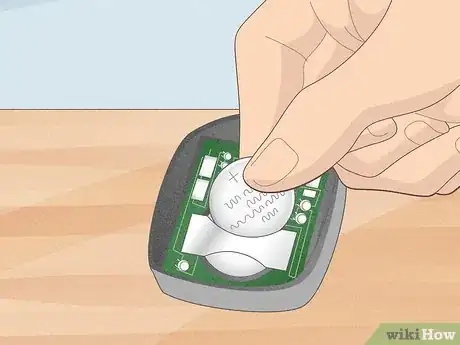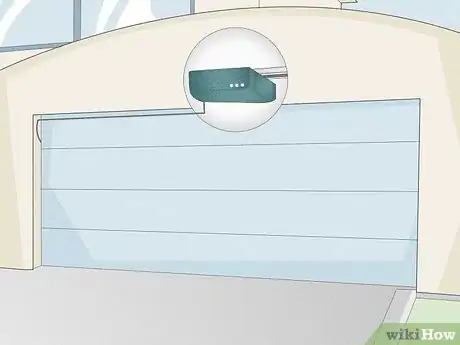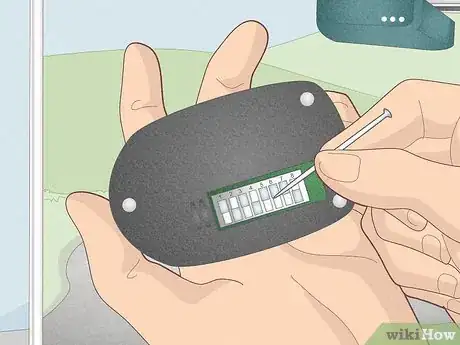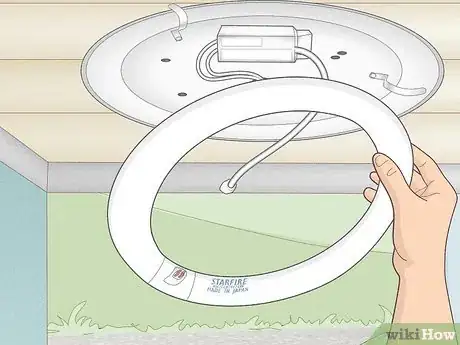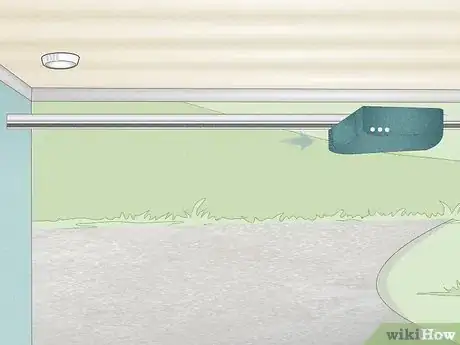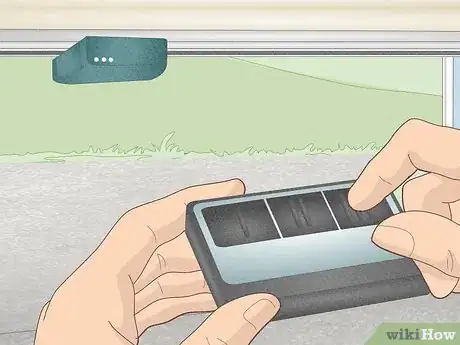This article was co-authored by wikiHow staff writer, Amy Bobinger. Amy Bobinger has been a writer and editor at wikiHow since 2017. She especially enjoys writing articles that help people overcome interpersonal hurdles but frequently covers a variety of subjects, including health and wellness, spirituality, gardening, and more. Amy graduated with a B.A. in English Lit from Mississippi College in 2011 and now lives in her hometown with her husband and two young sons.
There are 12 references cited in this article, which can be found at the bottom of the page.
This article has been viewed 37,016 times.
Learn more...
It's frustrating to struggle with your garage door opener at the end of a long day, but luckily, there are a few simple tricks that might help you extend the range of your remote. The typical range of a garage door opener is about 100 ft (30 m), but a number of things can affect how well it works. Improving the range of your opener might be as simple as changing out your batteries, although in some cases, you might need to relocate the transmitter to avoid interference from other devices.
Steps
Check whether the car visor interferes with the remote.
-
Hold the remote in your hand if it's clipped to your visor. Then, press the button to open your garage. If the opener works fine when you're holding it, but it doesn't work on the visor, there may be something in the visor interfering with the signal. In that case, extending the range on your opener might not make much of a difference—you just won't be able to use the remote from the visor.[1] X Research source
Replace the battery.
-
This simple fix only takes a few minutes. A failing battery can definitely impact how well your garage door opener works.[2] X Research source To replace the battery in most remotes, remove the visor clip, then gently pry off the back cover with a flat-head screwdriver. Use the screwdriver to carefully pop out the old battery, then simply press the new battery into place and replace the cover.[3] X Research source
- Most garage door openers use a 2032 button battery, although some do use different sizes.
- If you've recently changed the batteries but they still aren't working, test them with a battery tester. If the battery sat on the shelf for a long time before you bought it, it might have been dead when it got to you.
Extend your antenna.
-
Use this simple fix to boost your range. Find the antenna on your garage door opener—it's typically just an insulated wire hanging from the device. Turn off the power to your garage, then use wire strippers to cut off about 1⁄2 in (1.3 cm) of insulation from the end of the wire. Then, cut about 20 ft (6.1 m) of low-voltage copper wire and strip 1⁄2 in (1.3 cm) from one end of that, as well. Twist the two bare ends of wire together and wrap them in electrical cord, then stretch the new wire down the beam that supports your garage door when it's open. Secure the wire near your garage door.[4] X Research source
- If you'd like, you can feed the new antenna over your garage door so it goes outside. This will boost your signal even more, but it's fine to leave it inside the door if you don't want to see the wire.[5] X Research source
- You can use any wire you happen to have lying around, including stereo, ethernet, or telephone wire.[6] X Research source
Replace your remote if it's more than 10 years old.
-
Try this if you think the contacts might be worn out. As the remote ages and the contacts wear down, the remote is no longer able to send a strong signal to the transmitter. Over time, this will affect the range of the garage door opener. You can purchase a replacement remote from most big-box stores that sell home improvement supplies.[7] X Research source
- If the remote sat for a long time with old batteries, the circuits are likely corroded. In that case, the remote probably needs to be replaced even if it's less than 10 years old.[8] X Research source
Change the frequency of an older opener.
-
Flip the frequency switches if your remote has them. Older garage door remotes communicate with the transmitter on a certain frequency. This frequency is determined by a series of switches, known as DIP switches. Open the back of your remote and look for these switches—there might be 9 or 12, depending on the model of your opener. Then, look at your transmitter, or the box inside your garage that controls the opener, and find the corresponding switches. Alternate some of the switches from their current position—just make sure they match exactly on the remote and the transmitter.[9] X Research source
- It's better to use a random pattern for the switches, rather than putting them all in a straight row—that will make it less likely for someone to be able to copy your RF signal and open your garage door.
- If your transmitter works on a frequency but it doesn't have switches, you can install an external receiver near the garage door opener that will convert the frequency for you.
Replace your lightbulbs if they're causing interference.
-
Unplug your garage lights to see if that's the problem. Some devices emit radio signals that can interfere with your garage door opener. LED and fluorescent lights are a frequent culprit, so if you have them installed in your garage, try unplugging them for a few minutes. If the range on your garage door opener improves when the lights are unplugged, try replacing the bulbs with a different brand.[10] X Research source
- If you don't want to replace your lightbulbs, it may help to install a ferrite clip around the power cord on the box that controls your garage door opener. Simply clamp the clip around the power cord and snap it into place to help block out RF interference. You can order these cores online or purchase them from an electronic store.
Move the opener control box if you can't remove the interference.
-
Place it further away from other electrical devices. There are a number of devices that could cause interference, including automated sprinkler systems or lights, surge protectors, and alarms. If you're able to identify what's causing the interference and it's not an option to move it, moving the box that controls your garage door opener may help solve the problem. Just keep in mind that you may need to have a professional do the installation for you.[11] X Research source
- For instance, if you have a cable running along the back of your garage that's causing interference, re-installing your garage door opener box toward the front of your garage may help.
- Unfortunately, it can be hard to pinpoint what's exactly causing the problem—it could be something like a nearby airport or radio tower, for instance.[12] X Research source
Reprogram the remote if it uses a code.
-
Reset the remote if it's no longer responding at all. If your garage door opener isn't working, something may have happened to reset the code it transmits to the receiver.[13] X Research source While the process may vary depending on your garage door opener, most major brands have a button on the opener or the wall control that says "Learn." Press this button, then press and hold the button on your opener that you want to use to open the door.[14] X Research source
- If the button is on the box that controls your garage door opener, it will be near the base of the antenna.
- Depending on your model, you may hear a click on the garage door, or you might see flashing lights on the remote that indicate the programming worked.
- When you're finished, press the button again to make sure the garage door opens.
You Might Also Like
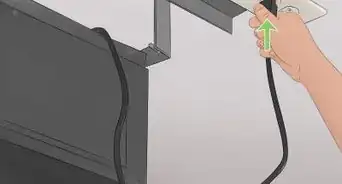 How to Open a Garage Door without Power
How to Open a Garage Door without Power



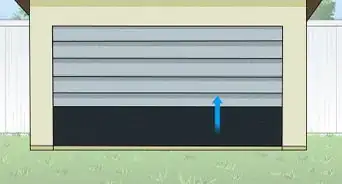
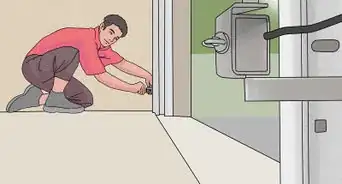
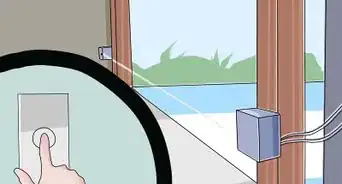

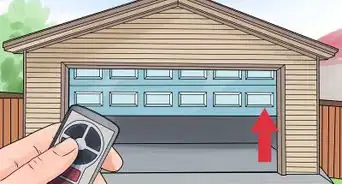
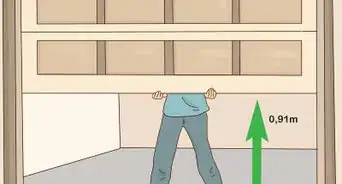

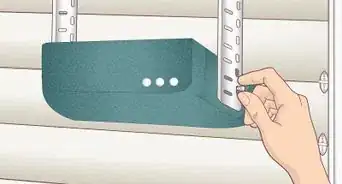
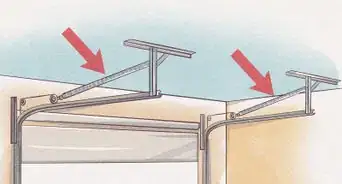

References
- ↑ https://support.chamberlaingroup.com/s/article/Remote-controls-only-work-close-to-the-garage-door-opener-1484145692760
- ↑ https://www.cnet.com/how-to/how-to-fix-common-garage-door-issues/
- ↑ https://www.youtube.com/watch?v=puEQzrLPiYo?t=12
- ↑ https://www.youtube.com/watch?v=RLXw35KOIJs?t=107
- ↑ https://www.youtube.com/watch?v=zAjFpCZyZwo?t=42
- ↑ https://www.youtube.com/watch?v=RLXw35KOIJs?t=65
- ↑ https://www.codymays.net/solutions-for-boosting-the-signal-range-of-your-garage-doors-remote-control/
- ↑ https://garagedoorguide.com/top-5-ways-to-increase-garage-door-remote-signal/
- ↑ https://www.youtube.com/watch?v=2VyH2L740Dg?t=17
- ↑ https://www.youtube.com/watch?v=aIrLWTVeJp0?t=5
- ↑ https://www.codymays.net/solutions-for-boosting-the-signal-range-of-your-garage-doors-remote-control/
- ↑ https://garagedoorguide.com/top-5-ways-to-increase-garage-door-remote-signal/
- ↑ https://www.cnet.com/how-to/how-to-fix-common-garage-door-issues/
- ↑ https://www.youtube.com/watch?v=B_YB_H1xmbA?t=14
About This Article


